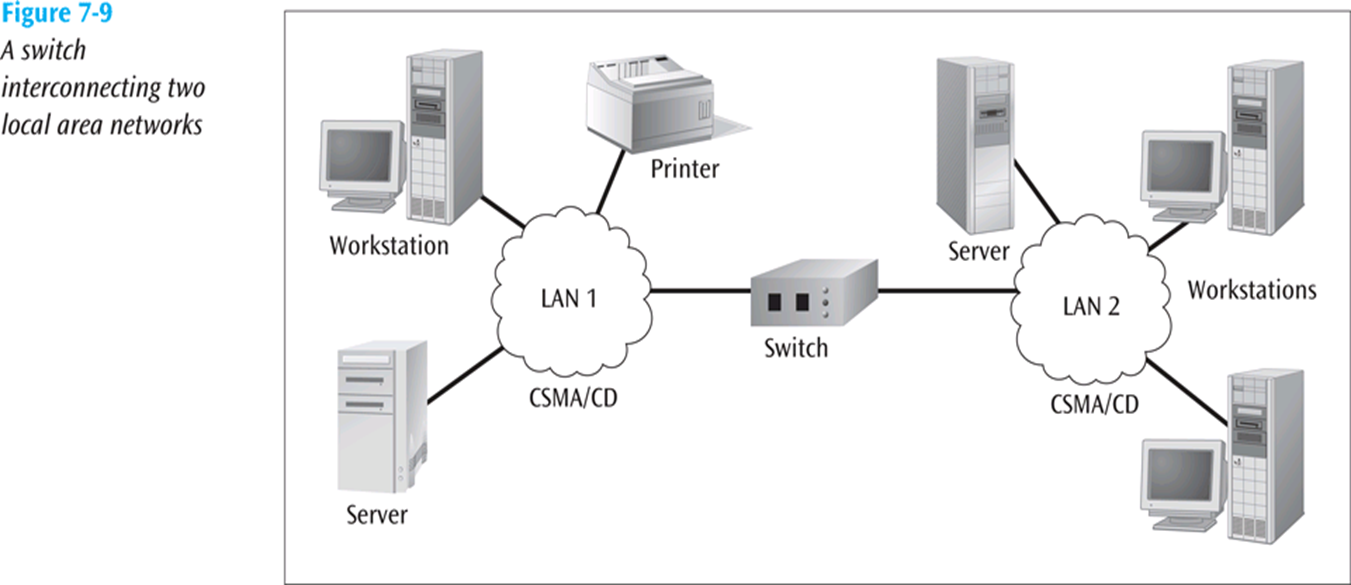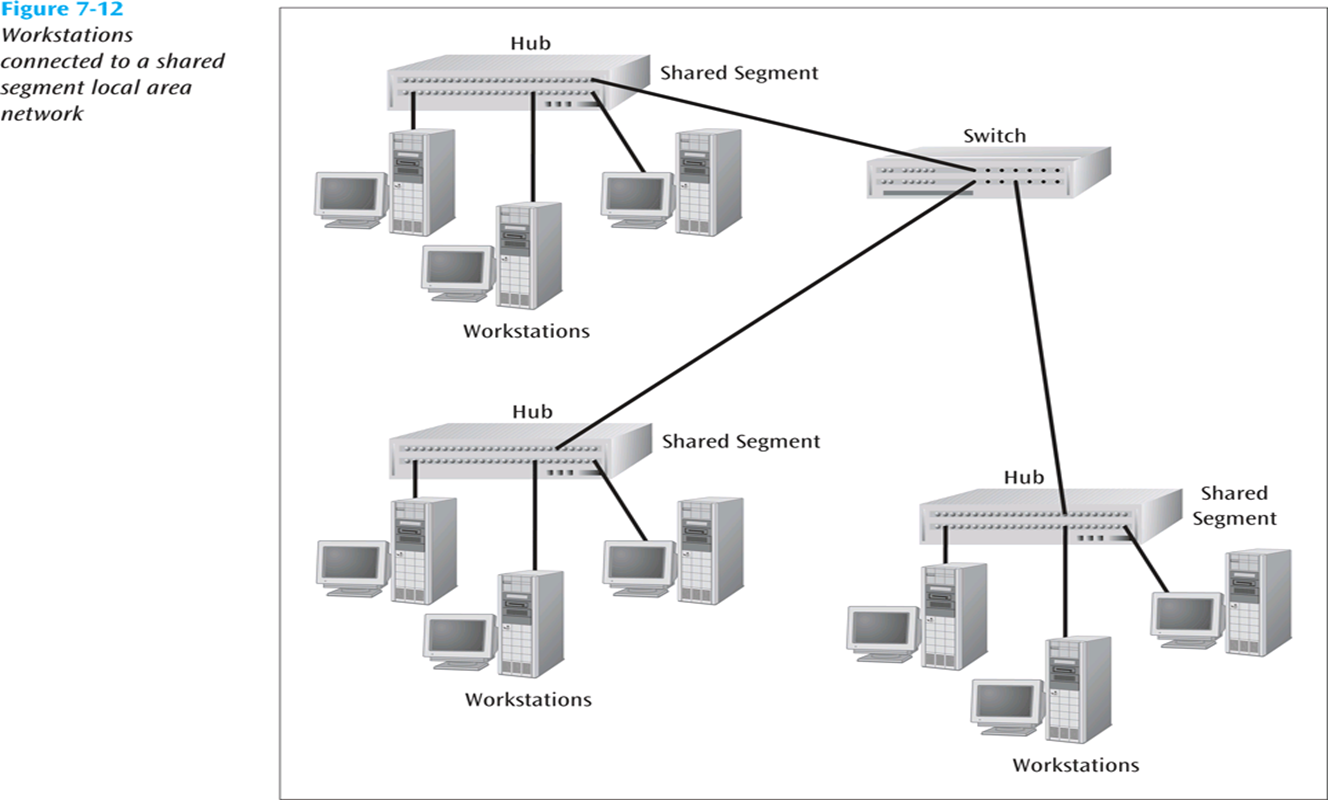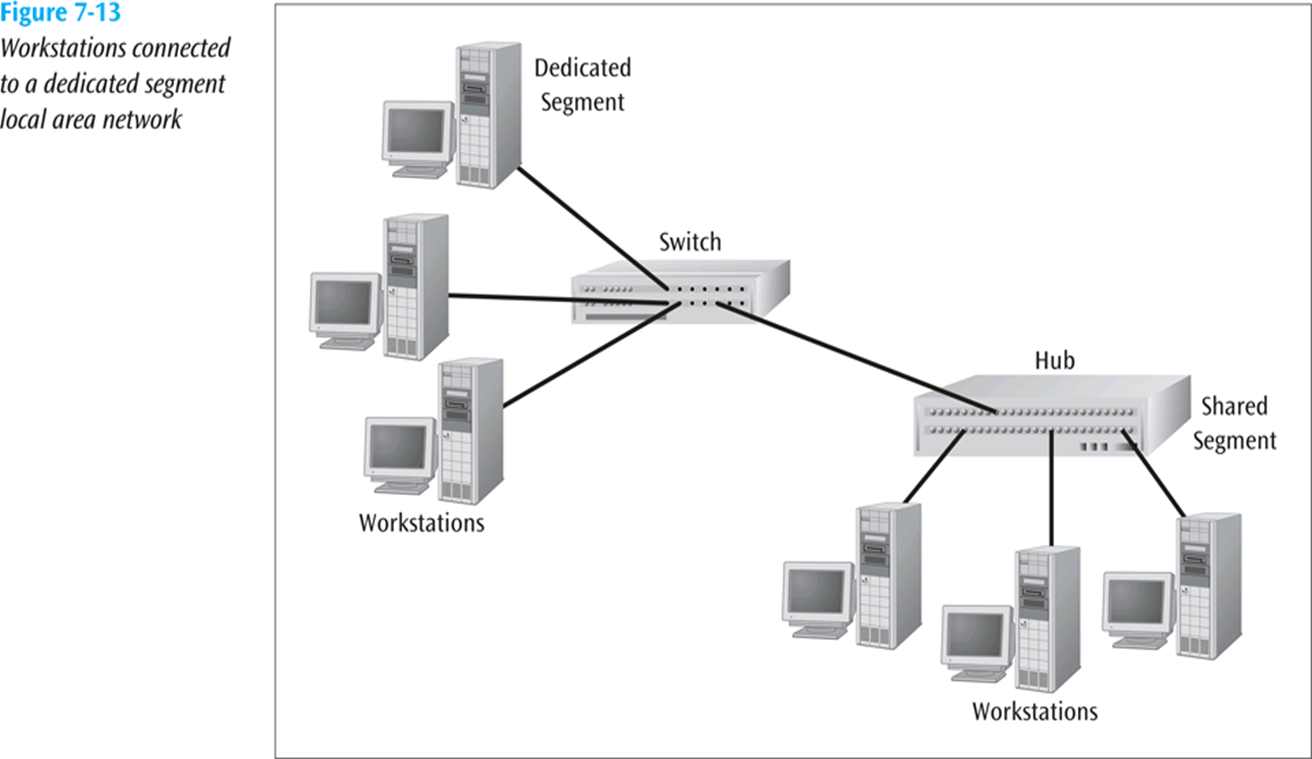Switch
Switch
- Switches create a unique network segment on each port, separating collision domains, improving network performance and bandwidth.
- Unlike hubs, switches can intelligently filter and forward data based on the NIC (MAC) address of devices.
- Switches use forwarding tables to route data between computers, learning this information automatically from incoming packets.
Key Features of Switches
- Direct connection: Hosts are directly connected to the switch, allowing simultaneous data transfers like A-to-A’ and B-to-B’ without collisions.
- Cascading: Switches can be cascaded to expand the network.
- Filtering frames: Unlike hubs, which broadcast incoming frames to all ports, switches forward frames to specific devices based on *MAC Addresses.
Switch vs. Hub
Workstations connected to a shared segment Local Area Network (LAN)
Workstations connected to a dedicated segment Local Area Network (LAN)
- Hubs: Simply transmit incoming frames to all ports, creating a shared network segment.
- Switches: Provide dedicated segments for each device, eliminating collisions and improving performance.
Advantages of Switches
- Simultaneous transmissions: Multiple devices can communicate simultaneously without collisions.
- Efficient isolation: Heavy users can be isolated from the rest of the network, optimizing traffic.
- Full duplex: Links use Full-Duplex Switches for communication, preventing collisions.
Switch Backplane and Cut-Through Architecture
- Backplane: The switch’s backplane is fast enough to support multiple data transfers at once.
- Cut-through architecture: Allows the switch to start forwarding a frame before it is fully received, reducing latency.
Ethernet Switch
- Link-layer device: Switches operate at the link layer (layer 2) and manage the forwarding of Ethernet frames.
- Transparent: Hosts are unaware of the switch’s presence.
- Plug-and-play: Switches are self-learning and do not require configuration.
Switch Tables and Self-Learning
- Switch table: Keeps track of MAC Addresses, the interface they are reachable through, and a timestamp (TTL).
- Self-learning: When a frame is received, the switch learns the sender’s location and updates its table. If the destination is unknown, the switch floods the frame to all ports except the incoming one.
- Frame filtering/forwarding: Switches filter frames by checking their MAC destination address in the switch table.
Self-Learning Example
| MAC Address | Interface | TTL |
|---|---|---|
| A | 1 | 60 |
| A’ | 4 | 60 |
- Frame destination unknown: If a switch doesn’t know the destination’s location, it floods the network.
- Frame destination known: The switch forwards the frame through the appropriate interface.
Interconnecting Switches
- Self-learning switches can be connected together. When sending from A to G (via multiple switches), the switch network uses self-learning to forward the frame along the correct path. A switch need the ability to Isolating Traffic Patterns and Providing Multiple Access


